#Women in Computing
Explore tagged Tumblr posts
Text
pro tip for programmers - how to alias
hey, so you know that annoying thing that happens when you're coding, and you need to run/test the same program 100 times in a row, so you end up typing "python3 testScriptWithASuperLongName.py" into the terminal about 80,000 times?
well, there's a better way! it's called aliasing :D
in your bash shell (or zsh, or whatever shell you use, but bash is the default on VSCode and most people on tumblr use VSCode, so I'm using bash as the default to explain this concept) you can set an alias, essentially a shortcut command, that runs longer commands.
(yes you can just use the up arrow key to re-run the same command, but sometimes you're typing other things into the terminal too and you don't feel like hitting the up arrow key four times in a row, and also this is just a cool and useful tip to get comfortable with aliasing so shhhh)
so, in your terminal shell, just type this:
alias run="python3 testScriptWithASuperLongName.py"
now, you can run that entire super long command, just by typing the word "run" into your terminal. Here's a screenshot of an example on my computer to make it make more sense:

in this example, i just created a simple python file that contains one line of code: print("it works!")
then, as you can see, by setting the alias to run, i can now run that file, runningatestscript.py, simply with the command 'run'.
the best part is, this alias is temporary - it only lasts as long as your shell session is open. so once you close the terminal, the run alias is cleared and you can set it again next time to any file or task you're currently working on, to save yourself a lot of typing, typos, and time.
so if you want to, you can get in the habit of always setting a run alias in the VSCode terminal for whichever file you're working with as soon as you get everything open. that way, when you need to run the same file 50 million times, you have a super easy way of doing it! you can even set it to a single letter if you want to go for maximum speed, but i prefer to use whole short words, because they're easy for me to remember.
note: if you do want to set an alias to work for all sessions, you can simply add it to your ./bashrc file. this is a common way to automate repeatable tasks, and simply to set easier-to-remember commands for terminal commands that are really complicated/confusing/hard to remember.
for example, i saved the alias checkboot="[ -d /sys/firmware/efi ] && echo 'UEFI mode' || 'BIOS mode'" into my zshrc file (zsh equivalent of bashrc file). this way, no matter how many times i rebooted my machine, i would always be able to quickly check which boot mode was running by simply typing 'checkboot'.
yesterday i was updating my boot mode from BIOS to UEFI on my very old machine that is technically compatible with UEFI, but not configured for it by default. So it was extremely helpful and saved me the time and headache of having to remember and type that long-ass command a thousand times in between many different reboots and new shells.
if you have any tasks like that, or terminal commands that you know would be useful to you, but you can never remember them when you need them, i highly recommend getting comfortable with aliasing! it can be super useful to simply set custom aliases for all the commands you don't want to remember, so that you can automate things away and not have to worry about so much linux syntax all the time when you're tring to focus on programming.
i know this may seem like a simple tip to some, but i only learned about it recently and it's been extremely helpful to integrate into my workflow and customize my OS with! so i thought it might be worthwhile to some people if i share :) hope it helps!
#codeblr#linux#hacker#compsci#hack the planet#hacking#studyblr#coding#progblr#programmer#programming#women in tech#women in stem#women in computing#women in cs#comp sci#coding tips#programming tips#software development#software developers#vscode
112 notes
·
View notes
Text
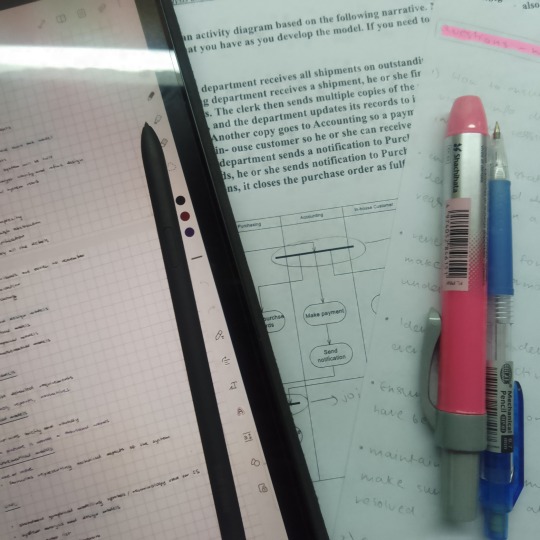
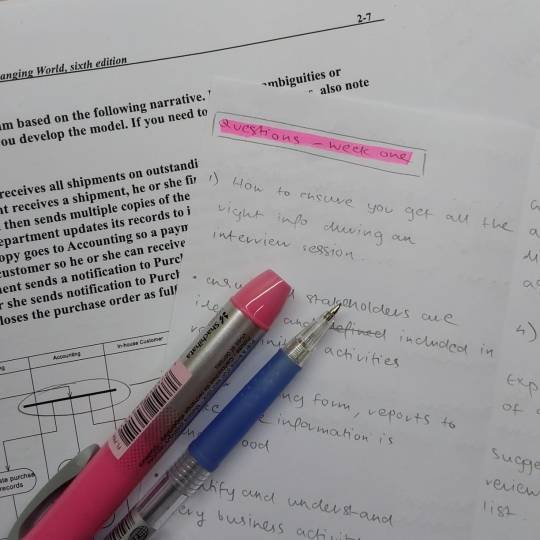
studying for a midterm i have on system analysis tomorrow !! :3
#coding#codeblr#programming#progblr#studyblr#comp sci#learn to code#studying#computer science studyblr#cs studyblr#compblr#compsciblr#computer science#woman in stem#women in computing#studyspo#langblr#study#study motivation#studyspiration#new studyblr#study blog#bookblr#100 days of productivity#compsci studyblr#codetober#tech#100 days of code#100daysofcode#study challenge
88 notes
·
View notes
Text
the progressive removal of usb ports, headphone jacks, etc. is desexualization. a computer is a woman and she wants you to penetrate her
26K notes
·
View notes
Text

LaRue Burbank, mathematician and computer, is just one of the many women who were instrumental to NASA missions.
4 Little Known Women Who Made Huge Contributions to NASA
Women have always played a significant role at NASA and its predecessor NACA, although for much of the agency’s history, they received neither the praise nor recognition that their contributions deserved. To celebrate Women’s History Month – and properly highlight some of the little-known women-led accomplishments of NASA’s early history – our archivists gathered the stories of four women whose work was critical to NASA’s success and paved the way for future generations.
LaRue Burbank: One of the Women Who Helped Land a Man on the Moon
LaRue Burbank was a trailblazing mathematician at NASA. Hired in 1954 at Langley Memorial Aeronautical Laboratory (now NASA’s Langley Research Center), she, like many other young women at NACA, the predecessor to NASA, had a bachelor's degree in mathematics. But unlike most, she also had a physics degree. For the next four years, she worked as a "human computer," conducting complex data analyses for engineers using calculators, slide rules, and other instruments. After NASA's founding, she continued this vital work for Project Mercury.
In 1962, she transferred to the newly established Manned Spacecraft Center (now NASA’s Johnson Space Center) in Houston, becoming one of the few female professionals and managers there. Her expertise in electronics engineering led her to develop critical display systems used by flight controllers in Mission Control to monitor spacecraft during missions. Her work on the Apollo missions was vital to achieving President Kennedy's goal of landing a man on the Moon.
Eilene Galloway: How NASA became… NASA
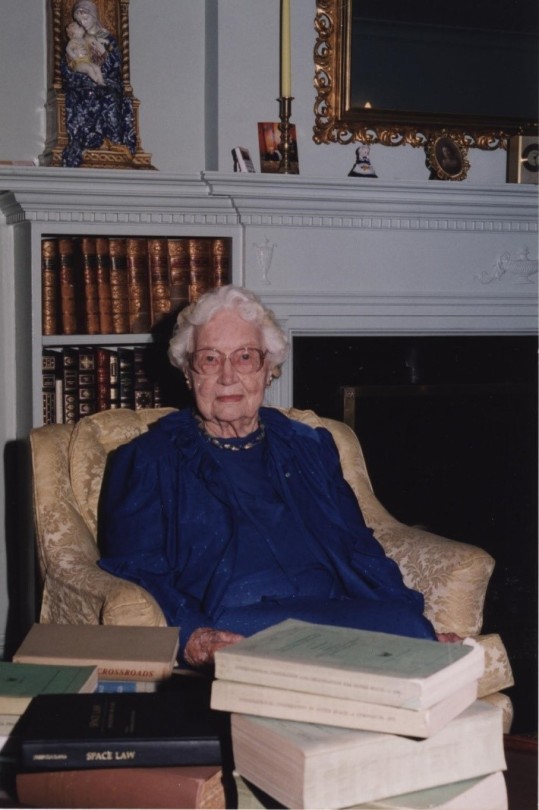
Eilene Galloway wasn't a NASA employee, but she played a huge role in its very creation. In 1957, after the Soviet Union launched Sputnik, Senator Richard Russell Jr. called on Galloway, an expert on the Atomic Energy Act, to write a report on the U.S. response to the space race. Initially, legislators aimed to essentially re-write the Atomic Energy Act to handle the U.S. space goals. However, Galloway argued that the existing military framework wouldn't suffice – a new agency was needed to oversee both military and civilian aspects of space exploration. This included not just defense, but also meteorology, communications, and international cooperation.
Her work on the National Aeronautics and Space Act ensured NASA had the power to accomplish all these goals, without limitations from the Department of Defense or restrictions on international agreements. Galloway is even to thank for the name "National Aeronautics and Space Administration", as initially NASA was to be called “National Aeronautics and Space Agency” which was deemed to not carry enough weight and status for the wide-ranging role that NASA was to fill.
Barbara Scott: The “Star Trek Nerd” Who Led Our Understanding of the Stars
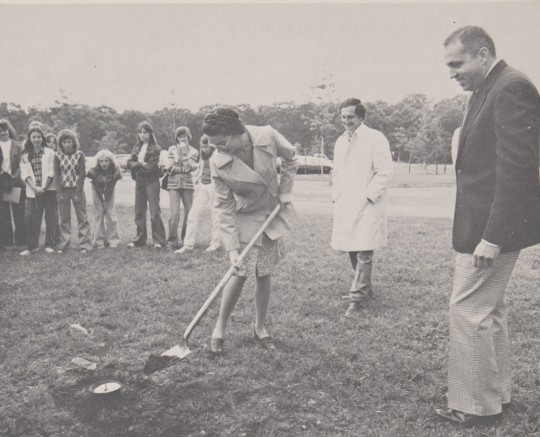
A self-described "Star Trek nerd," Barbara Scott's passion for space wasn't steered toward engineering by her guidance counselor. But that didn't stop her! Fueled by her love of math and computer science, she landed at Goddard Spaceflight Center in 1977. One of the first women working on flight software, Barbara's coding skills became instrumental on missions like the International Ultraviolet Explorer (IUE) and the Thermal Canister Experiment on the Space Shuttle's STS-3. For the final decade of her impressive career, Scott managed the flight software for the iconic Hubble Space Telescope, a testament to her dedication to space exploration.
Dr. Claire Parkinson: An Early Pioneer in Climate Science Whose Work is Still Saving Lives
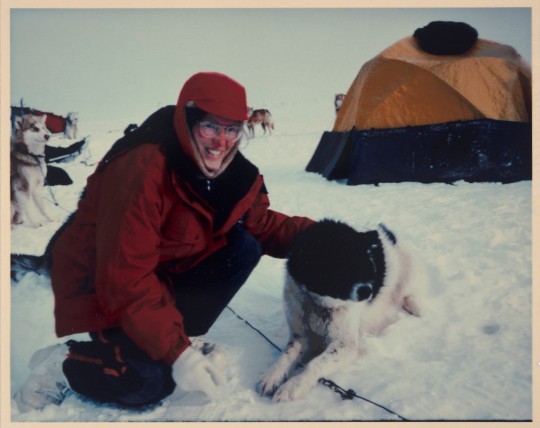
Dr. Claire Parkinson's love of math blossomed into a passion for climate science. Inspired by the Moon landing, and the fight for civil rights, she pursued a graduate degree in climatology. In 1978, her talents landed her at Goddard, where she continued her research on sea ice modeling. But Parkinson's impact goes beyond theory. She began analyzing satellite data, leading to a groundbreaking discovery: a decline in Arctic sea ice coverage between 1973 and 1987. This critical finding caught the attention of Senator Al Gore, highlighting the urgency of climate change.
Parkinson's leadership extended beyond research. As Project Scientist for the Aqua satellite, she championed making its data freely available. This real-time information has benefitted countless projects, from wildfire management to weather forecasting, even aiding in monitoring the COVID-19 pandemic. Parkinson's dedication to understanding sea ice patterns and the impact of climate change continues to be a valuable resource for our planet.
Make sure to follow us on Tumblr for your regular dose of space!
#NASA#space#tech#technology#womens history month#women in STEM#math#climate science#computer science
2K notes
·
View notes
Text
why neuroscience is cool
space & the brain are like the two final frontiers
we know just enough to know we know nothing
there are radically new theories all. the. time. and even just in my research assistant work i've been able to meet with, talk to, and work with the people making them
it's such a philosophical science
potential to do a lot of good in fighting neurological diseases
things like BCI (brain computer interface) and OI (organoid intelligence) are soooooo new and anyone's game - motivation to study hard and be successful so i can take back my field from elon musk
machine learning is going to rapidly increase neuroscience progress i promise you. we get so caught up in AI stealing jobs but yes please steal my job of manually analyzing fMRI scans please i would much prefer to work on the science PLUS computational simulations will soon >>> animal testing to make all drug testing safer and more ethical !! we love ethical AI <3
collab with...everyone under the sun - psychologists, philosophers, ethicists, physicists, molecular biologists, chemists, drug development, machine learning, traditional computing, business, history, education, literally try to name a field we don't work with
it's the brain eeeeee
#my motivation to study so i can be a cool neuroscientist#science#women in stem#academia#stem#stemblr#studyblr#neuroscience#stem romanticism#brain#psychology#machine learning#AI#brain computer interface#organoid intelligence#motivation#positivity#science positivity#cogsci#cognitive science
2K notes
·
View notes
Text
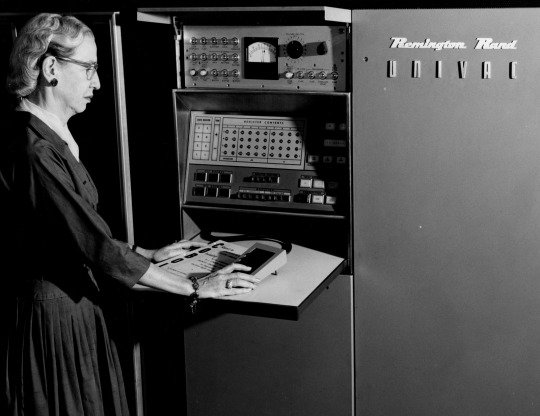
Computer pioneer Grace Hopper running programs on a Univac I computer in 1952.
Hopper wrote the Univac A-0 compiler that allowed more abstract instructions to be converted into machine-runnable code, widely accepted to be the first computer language compiler ever created.
828 notes
·
View notes
Text
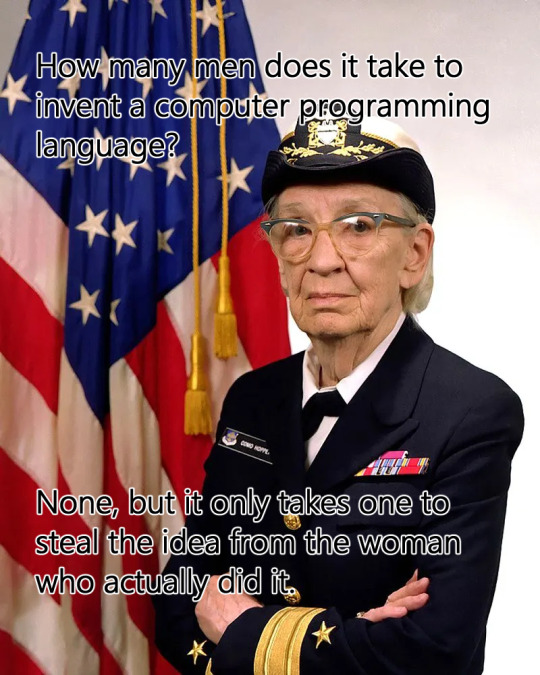
This woman is Dr. Grace Murray Hopper. She created the first computer language compiler tools to program the Harvard Mark I computer. This computer was used in WWII after 1944. John von Neumann initiated the computer's first program, but Hopper invented the codes
2K notes
·
View notes
Text
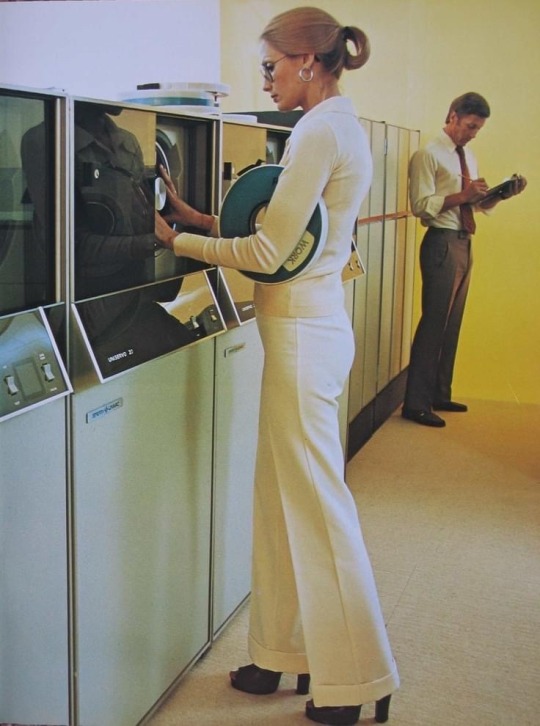
Working in a datacenter in the 70s
#retro#70s#1970s#fashion#datacenter#retrocomputer#70s fashion#vogue#mainframe#magnetic tape#computer operator#retro computers#big iron#women in stem#women in tech
1K notes
·
View notes
Text

In 1965, Sister Mary Kenneth Keller became the first American woman to receive a doctorate in computer technology.
#reddit#historycord#present-shower5055#1965#1960s#sister mary kenneth keller#american#woman#whm#history#womens history#womens hisotry month#stem#computer technology#doctorate#education#nun
101 notes
·
View notes
Text
💖Happy International Women's Day to the Gal Pals💖

#the spongebob connoisseur#spongebob squarepants#spongebob#sb#spongebon squarepants#spongebob meme#Karen plankton#Karen the computer#Karen#Pearl#Pearl krabs#Pearl whale#Sandy cheeks#Sandy squirrel#Mrs puff#Poppy puff#Penelope puff#International womens day
98 notes
·
View notes
Text

#cyberpunk#cyberpunk aesthetic#cybercore#cyberpunk art#a e s t h e t i c#cyborg#cybernetics#computer#android#robotics#robot#machinery#gynoid#pregnant#pregnancy#pregblr#big pregnant belly#pregnant women#glass bubble#weirdcore
87 notes
·
View notes
Text

#classy#beautiful women#sexy nylons#nylon pantyhose#sexy lace lingerie#so hot and sexy#brunnete#glasses#computer#office chairs
107 notes
·
View notes
Text
born to code, forced to learn theory 💔💔💔
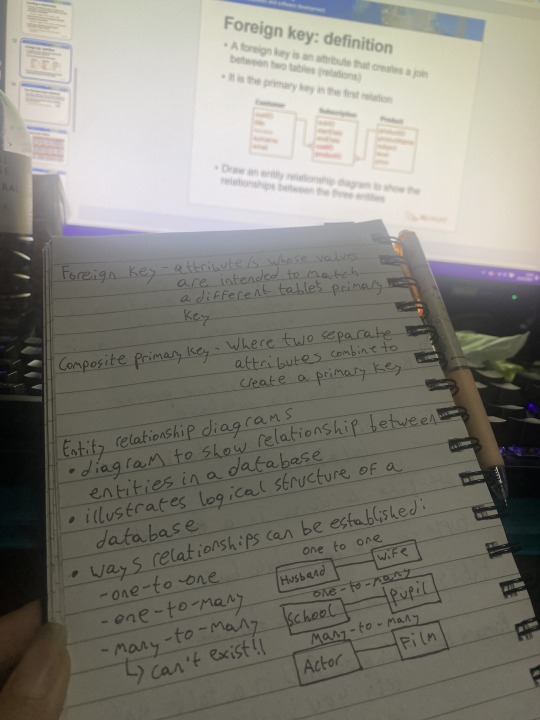
#codeblr#programmer#programming#comp sci#i yearn to code#coding#csblr#computing#computer science#computer#python#theory#stem student#student life#study motivation#studyblr#studying#studyspo#student#study blog#stemblr#women in stem#stem#stem academia#academics#science
92 notes
·
View notes
Text



HALLE | Angel
@lgbtqcreators creator bingo | lyrics
#halle bailey#musicedit#dailymusicians#dailywomen#flawlessbeautyqueens#dailywoc#pocpopculture#pocedit#femalestunning#breathtakingqueens#dailymusicqueens#userbbelcher#userzonez#black women#black music#black girl magic#mygifs#i downloaded this in 4k my computer said NO#but i made it work
676 notes
·
View notes
Text
drake: haha i’m gonna diss kendrick
kendrick lamar’s honest to god reaction:
#kendrick lamar#drake#drake diss#kendrick diss#kendrick#meet the grahams#like…wow#dude i don’t even listen to either of these guys but wow kendrick cooked#if i were drake i would simply move away to a deserted island and never show my face again#how do you live a normal life after that#“fuck a rap battle he should die so all these women can live with a purpose HOLY SHIT#BRO HES ALREADY DEAD 😭😭#i know kendrick had these saved on his computer for sooooo fucking long#like absolutely desiccating this man#anyways i hope megan thee stallion is eating good tonight
172 notes
·
View notes
Text

For my lovely followers - and all people in STEM
You can do it!!
#stem#science#stemblr#girls in stem#womeninengineering#aesthetic#studyblr#women#the love hypothesis#chemistry#physics#computer science#mine#graphic design#quotestoliveby#quotes#women in stem#female#people of color#queer
501 notes
·
View notes